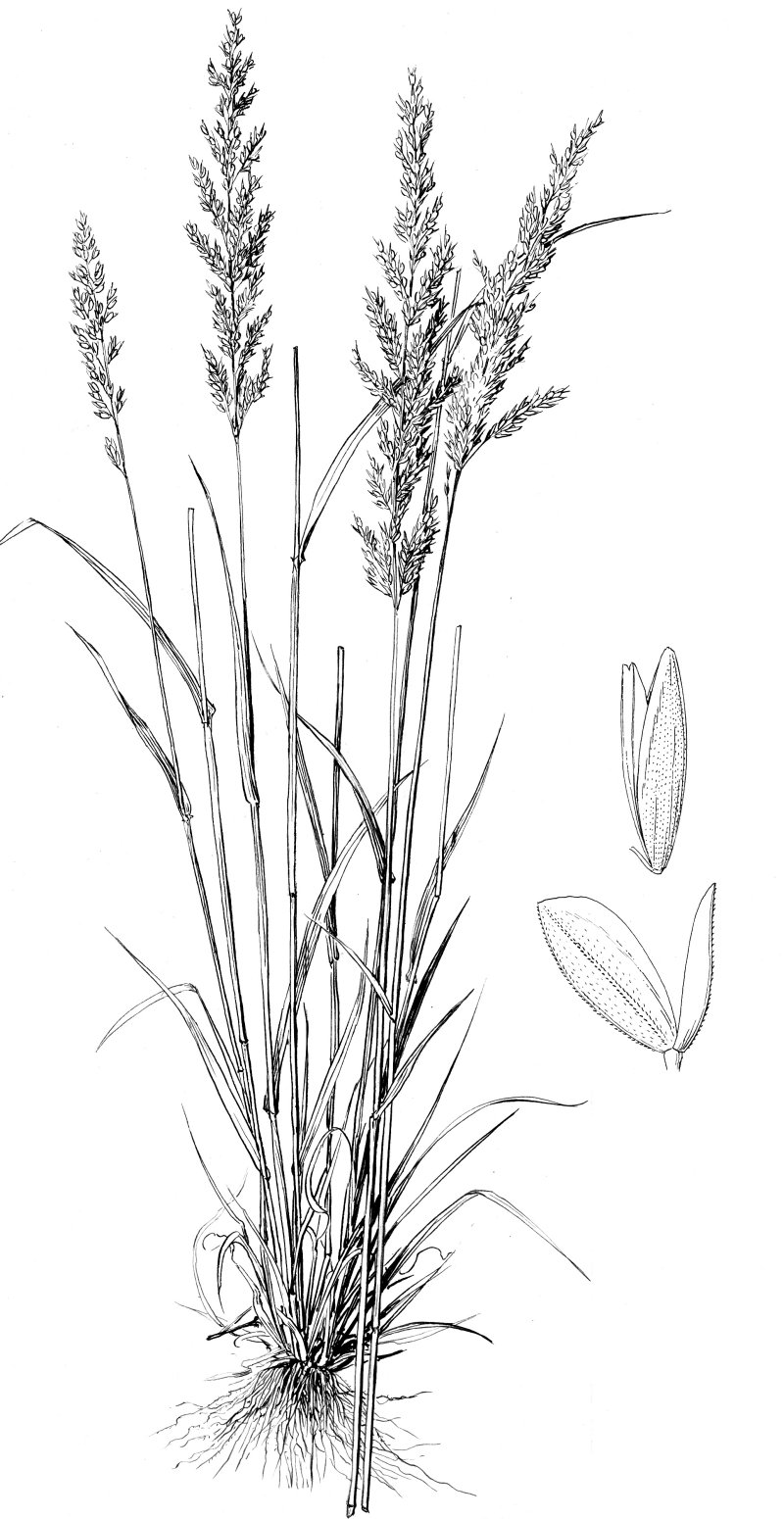
Sphenopholis obtusata (Michx.). Prairie Wedgescale Habit: Tufted perennial. Culms: 30-100 cm. tall, erect or decumbent at base, solitary or a few culms in a tuft, often scabrous just below the panicle. Blades: 3-20 cm. long, 2-5 mm. wide, flat, scabrous, pubescent or glabrous. Sheaths: Shorter than the internodes, rather lose, finely retrorsely pubescent to nearly glabrous. Ligule: Membranous, 1.5-3 mm. long, erose. Inflorescence: Panicles light-green or purplish, finely exserted, usually narrow, 5-20 cm. long, dense and spikelike to interrupted or lobed. Spikelets: Crowded on glabrous pedicels about 1 mm. long, 2.5-3 mm. long; numerous, 2-3-flowered (2 florets close together), shining, the pedicels disarticulating just below the glumes; rachilla prolonged behind the upper palea in a slender bristle, articulated between the florets, the glumes and lower floret with joint of pedicel tardily falling together. Glumes: First glume narrow, about one fifth as wide as and somewhat shorter than the second, 1-nerved, usually acute; the second much broader, obovate when spread, obtuse or truncate, 3-5-nerved, the nerves sometimes obscure, the broad scarious margins smooth and shining, exceeded by the uppermost floret, becoming subcoriaceous in fruit. Lemmas: (1.5)-2-2.5 mm. long, obtuse, narrower than the second glume, extending beyond it, minutely papillose, rarely mucronate or with a short straight awn, obscurely nerved. Palea: Slightly shorter than its lemma, narrow, 2-nerved, hyaline, exposed. Habitat: Prairies, fields, meadows and valleys. April-August. Kansas Range: Throughout. Use: Forage grass but not usually abundant. Synonyms: Sphenopholis obtusata (Michx.) Scribn. var. lobata (Trin.) Scribn. Sphenopholis obtusata (Michx.) Scribn. var. pubescens (Scribn. & Merr.) Scribn.